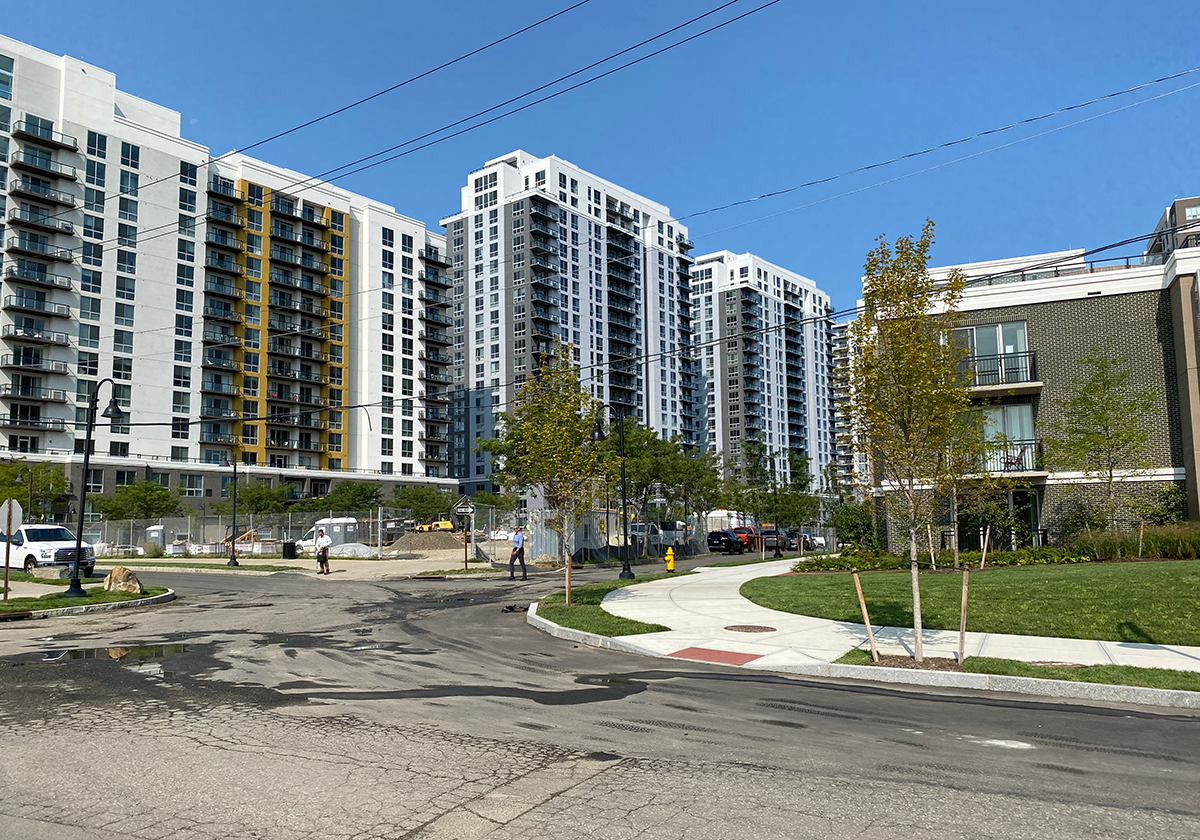Southwest Connecticut Communities Affordable Housing Plans Have Key Differences
Some major differences from the plans include prioritizing adding housing vs. keeping the community feel and affordable rentals vs. ownership properties.

Plans across southwest Connecticut also highlighted different priorities for communities in these plans as well as different strategies for adding housing. In September, the Fairfield County’s Center for Housing Opportunity, a “coordinated, regional response to address the shortage of housing in Fairfield County,” reviewed the plans that had been submitted and gave grades from 1-5 for communities in our region.
“Several towns across Fairfield County committed time and resources to produce thoughtful, equity-focused affordable housing plans,” said Christie Stewart, Chief Initiative Officer for the Centers for Housing Opportunity at the Housing Collective in a statement. “These scorecards highlight the strides municipalities are making towards creating a more affordable region, while also underscoring that work needs to be done at all levels of government to both improve the planning process and support plan implementation.”
The center gave Stamford the highest grade in the whole county for its plan with a 4 out of 5. Fairfield and Westport both received a 3, while Greenwich got a 2.5. Darien’s plan hadn’t been adopted before the report was released and Norwalk is still working on its plan.
Protection vs. Addition
Although all the plans acknowledged a need for affordable housing, many also stated a desire to limit building across their communities to keep their existing look and feel.
“There is a strong desire of the community to preserve and maintain the predominantly New England style, single-family character of the majority of neighborhoods in Darien,” Darien’s plan states.
Darien’s plan cites that before any redevelopment for affordable housing can take place, the “criteria that best harmonizes the new housing with existing the neighborhood would be related to minimum lot size, number of units per acre (density), setbacks and buffers, maximum building height, necessary on-site parking spaces to meet the needs of the residents and their visitors, providing space for active and/or passive recreation, etc.”
Greenwich’s plan clearly states that it does not want to develop as much as Stamford, the next town over.
“Greenwich is committed to increasing its affordable housing stock while preserving the features of Greenwich that its residents prize,” the plan reads. “Greenwich does not wish to become as urban in character as neighboring Stamford, as it expands its affordable housing offerings.”
Its plan states that it wants to “materially increase the level of affordable housing in Greenwich while at the same time respecting the fabric and addressing the needs of our community, including residents’ desire to preserve the land use patterns that drew many of them to the town.”
Westport’s plan both calls for “proactive development and preservation of affordable housing, including the development of affordable housing designed specifically to attract new families to Westport.”
But it also states that it wants to make sure the community keeps its small town feel.
“The thoughtful creation of affordable housing is critical to ensuring a diverse community of residents in Westport,” the plan states. “With proper planning, new affordable development can be encouraged while preserving Westport’s charming small town feel, historic resources, green spaces and the suburban lifestyle that attracts residents to want to live in this community and raise their families here
Stamford’s plan strongly advocated for more housing overall—both strictly affordable and other types, like market-rate, but was pretty much the only one that did that.
“Building new housing increases options for different household needs and reduces the amount that households spend on housing,” the plan listed under benefits of preserving and building housing. “This will help the roughly 20,700 households in Stamford that currently spend more than they can afford on housing to cover other necessities such as food and childcare, as well as free up income for higher income households to save and reinvest in the community.”
The county overall has seen some growth over the last 10 years, but much of that is from housing Stamford and other urban communities like Norwalk and Danbury.
Building all types of housing will help Stamford “retain its advantage” as “the growth leader of the county and the state,” according to the plan.
A Focus on “Moratoriums” From State Law
Stamford and Norwalk are the only two communities in the region that have 10% or more of their housing stock deemed affordable. This means that they are exempt from the 8-30g provisions that allow developers to propose plans that don’t always meet local zoning regulations, as long as 30% or more of the development is affordable.
The other communities have varying percentages of affordable housing stock, ranging from about 5.4% in Greenwich to 2.8% in Fairfield.
But the state does have a moratorium provision, which allows for communities who have not hit that 10% threshold to also receive that exemption as long as they’ve made progress toward adding affordable housing. “Darien is one of only three communities in the entire State of Connecticut to have made such significant progress as to achieve two moratoria—one in 2010 and the other in 2016,” according to its plan.
One of the main goals of Fairfield’s plan is to gain enough points to achieve a moratorium and “with affordable housing developments currently under construction and in the pipeline, it is anticipated that Fairfield may be eligible for its first moratorium in 2023.”
If Fairfield does achieve a moratorium, the plan states it will allow the town to take “control of its future by making regulatory changes to guide affordable housing (and housing choices) to locations and with designs that enhance the overall community and the “sense of place” rather than being subject to the Affordable Housing Appeals Procedure.”
Westport’s current moratorium ends at the end of March 2023, but officials stated in the plan that they believe enough units have been created or are in the pipelines so that the town will receive another.
Greenwich, on the other hand, states in its plan that it is going to try and “encourage 8-30g Set-Aside applicants either to make more than 30% of their units affordable or to build smaller Assisted Housing projects,” since the town states it is not close to a moratorium.
This is due in part to the fact that the town has seen a large uptick in the number of 8-30g proposals submitted.
“Until recently 8-30g has not had a major impact on Greenwich,” the plan stated. “In the three decades since the law was adopted, Greenwich saw developers employ it to construct only 32 affordable units. All that has changed, as rents have skyrocketed with increased demand caused by the pandemic, so have the number of applications submitted to build 8-30g ‘set-aside’ projects.”
Greenwich’s plan states that this has been a concern to local residents because “the size of these projects often dwarfs surrounding neighborhood structures, causing neighbors great concern and presaging a transformation of the Town’s architectural scale.”
Willingness to Expand Non-Single Family Zoning
Almost all of the plans highlight a need for “missing middle housing”—or housing that falls between single-family housing and very dense apartment buildings, such as duplexes, townhouses, and more.
But the willingness to expand zoning in single family neighborhoods to allow this type of housing varies widely.
Stamford’s plan asks the city to “consider opportunities to permit 2- to 4-unit structures (soft density) in areas where zoning allows only single-family housing. Focus on areas that have important infrastructure to support increased density, like water, transit and employment access.”
Providing Home Ownership Opportunities
Much of the plans focus on rental housing, in part because, as the Greenwich plan notes, officials believe that “there are many more lower income people seeking affordable rental housing than are seeking below-market home ownership properties,” and that “multifamily rental housing can be created at a lower cost per unit than is typically required for any for-sale product.”
But some also highlight a need and desire from many residents to support access to homeownership.
Stamford’s plan highlights a 23-unit affordable condo project at 287 Washington Boulevard from the nonprofit Housing Development Fund, which is “the first community land trust property in Stamford.”
Westport’s plan calls for looking into newer small home movements that provide a variety of affordable options, particularly ownership options.
“Special consideration shall be given to creating pocket neighborhood/cottage commons/mews developments that leverage new advances in small house development,” the plan states. “For example, cottage clusters could be created to expand existing cottage communities at Longshore and on the vacant land adjacent to the Saugatuck senior housing development.”
These newer housing types, like “sustainably developed modular construction kits and prefabricated cottages are providing new methods to build multifamily and small houses quickly and efficiently,” which Westport’s plan said will help “reduce overall costs” of building housing.
“From developing town-owned parcels of land to create pocket neighborhoods of cottages clustered around a common green to incentivizing private developers to retain antique homes by clustering other aesthetically appropriate tiny houses around the historic home, there are a myriad of strategies that can be employed to leverage modern construction processes to create more affordable housing in Westport,” the plan states.
Further Reading
Learn more about how we plan to cover this issue and how you can be a part of the process.
See the common themes among the affordable housing plans across the region.



